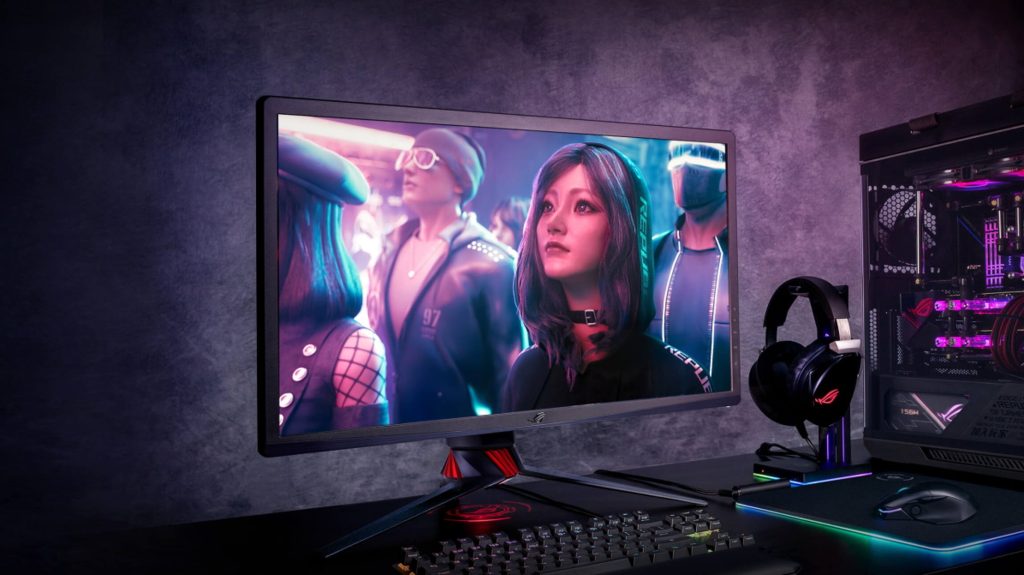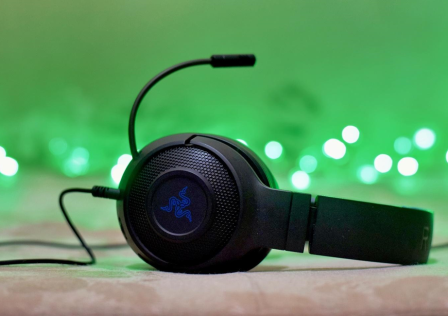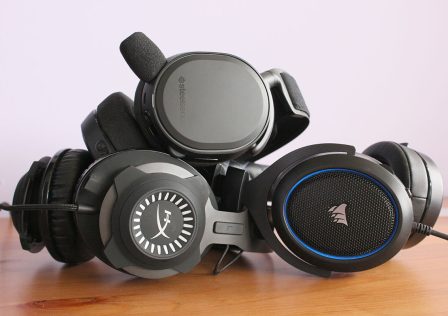Just like our eyes are the windows to our soul, a gaming monitor is the window to your gaming setup’s soul. A proper display setup is crucial for a great gaming experience. Without it, any game you play on your gaming system will not give you the same amount of thrill or joy. Hardware manufacturers have flooded the market with some of the best gaming monitors offering various specifications and unique features. But how do you know which resolution, refresh rate, response time, or image quality will make for the best gaming monitors? There isn’t one perfect monitor that will suit all preferences and usage styles, but to help you understand which features would suit you best, we have compiled the following guide.

Common Sizes
The size of your gaming monitor is an essential factor to consider since it will impact the resolution you would like to have, the viewing distance from the monitor, and your overall gaming experience. There are a variety of sizes available in the market, such as 24–25-inch, 27-inch, 32-inch, 34-38 inch, Super Ultra-Wide, and Large.
24-25 inch gaming monitors may be considerably smaller for split-screen multitasking but offer rich pixel density, 1080p resolution, and a highly responsive gaming experience. 32-inch and 34-38 inch gaming monitors are substantially larger and offer an immersive gaming experience with a 16:9 or 21:9 aspect ratio.
For people who would like to switch from multiple screens to just one, Super Ultra-Wide gaming monitors are the one. They are extra large and offer curved edges for better visibility, resolution, and more horizontal pixels. A large gaming monitor or TV can be the perfect choice for anyone who wants stunning image quality, a 4k display, and no interruptions during their gameplay.
Panel Types
When looking for the best gaming monitor, different panel technologies such as OLED, QLED, and LED may have popped up on the search. LED and QLED are similar since they both use LED backlight LCD panels, with the only difference being that QLED TVs have a quantum dot layer that offers a broader range of vivid colors.
OLED TV panels are much different from LED and QLED as their pixels are self-lit and can turn off completely when needed to produce perfect pitch blacks. OLEDs also offer a better and wider viewing angle, but LED and QLED TVs provide brighter, more vivid pictures. If you watch a lot of content with static components, OLED TVs might not be the best choice since they can suffer from a permanent burn-in.
Aspect Ratio
Aspect ratio is the ratio between the width and height of a display. 16:9 has been the tried-and-true standard widescreen ratio for gaming monitors and console games. It has been popular for many years due to its high versatility and adaptable nature to different resolutions. The 21:9 is a newer ultra-wide format that offers a broader field of view, more screen space, more ports, and add-on features. Nevertheless, choosing the best aspect ratio for your gaming monitor depends on which resolution you would like and if your hardware can support larger sizes.
Resolution
The resolution of your gaming computer determines how rich the image graphics and quality will be. 1080p has been the standard high-definition model, but quad-HD (1440p) is becoming the best resolution for gaming monitors nowadays. It offers the best benefits from Full HD (1080p) and Ultra HD (2160p) with striking visuals, high performance, and reasonable prices. On the other hand, UHD offers fantastic clarity and superb image quality but can be expensive and demanding on hardware resources.
Shape
Flat monitors have been a classic choice for gamers, but newer curved models offer better visibility with a greater field and aesthetics. Nevertheless, of all the best gaming monitors, they still fall short on performance indicators and gaming performance. Ultrawide gaming monitors also have a fantastic shape worth paying the extra buck since it offers 33 % more space than a regular gaming monitor.
On the other hand, G-Sync and Freesync are adaptive synchronization technologies that enable displays to sync with the content frame rate for low screen tearing and stuttering. Freesync offers a lower input lag and tearing, while G-sync provides smooth motions without tearing but with an input lag.

Image Quality/Panel Technology
Different types of panel technology that affect your gaming performance are suited to particular gaming habits. TN (Twisted Nematic) offers high display speeds to competitive multiplayer games with sharp colors and angles. IPS (In-plane Switching) provides the best color and angles but has lower speed and black level details, suitable for gamers who like role-playing games and narrative adventure games. VA (Vertical Alignment) is a suitable choice for any gamer with good performance and image quality but isn’t the fastest option in the market.
Features
Many of the best gaming monitors come with various features for improving the gamers’ experience. Flicker-free offers a single continuous light source for better viewing and reduced strain, similar to blue light filters, blocking the harmful blue light.
Backlighting is an aesthetic element for gaming monitors to improve the overall look of the setup, while built-in speakers can reduce the need for additional speakers. Another feature to consider is the viewable angle of a gaming monitor, which should be between your eye level and thirty degrees below your line of sight. Different port types (HDMI, DisplayPort, and USB) also contribute to refresh rate and the color quality, with the HDMI port most popular for consumer electronic use.
Refresh Rate (Hz)
Most gaming monitors offer a 240 Hz to 350 Hz refresh rate, which is the perfect choice for competitive gaming. 165 Hz is the middle ground for various games, between 144 Hz and 240 Hz gaming monitors, and is much more affordable than 240 Hz to 350 Hz gaming monitors. 144 Hz is perfect for someone who enjoys the best refresh rate for everyday gaming and is a much more fluid option than 60 Hz, which is the best refresh rate for casual gaming.
Select from Some of the Best Gaming Monitors Today!
This guide listed which features you need to consider to select the best gaming monitors and complete your gaming setup. Check out our curated collection of the best gaming monitors here:


